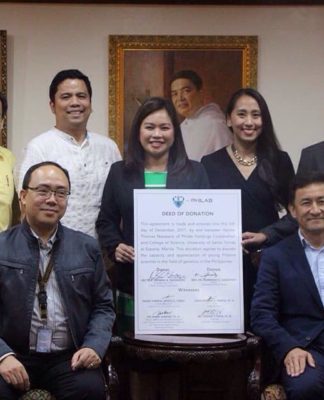October 21, 2015, 6:32p.m. – THE COUNTRY’S art community needs to grab the public’s attention through critical discourses, and also by encouraging more artists to talk about their works, art critics said in a recent forum.
In “Critical Platforms: A Forum on Art Criticism in the Philippines,” held at the University of the Philippines Vargas Museum last Oct. 17, Filipino art critics, curators and gallery operators called for more public engagement.
Carlomar Daoana, former Varsitarian associate editor and art critic for the Philippine Star, said few art reviews are published due to considerations of space, time and audience.
“Between a film festival as opposed to an art exhibition, the film festival would take precedence not because it’s more important but because it caters to a broader audience,” Daoana said.
For galleries to broaden their reach, they should “conduct artist talks and exhibition walkthroughs so that writers engage with artists beyond exhibition opening.” They should also “strengthen online presence,” he said.
Patrick Flores, curator of the UP Vargas Museum, said more people were needed in curatorial work. “The [critics take] on other [roles] besides giving criticism because there’s a bit of conflation in their role. They are both art historian and curator and this is a bit of problem,” Flores said.
Reuben Canete, a UST painting alumnus and professor at the UP Asian Center, called for more critical discourse.
“Critical discourse is about delivering the goods—a comprehensive text on what the art of the moment is all about—where the only way to engage with people is through contextualization,” he said.
“Kulo,” the controversial art exhibit mounted at the Cultural Center of the Philippines in 2011, was recalled by Sam Marcelo, associate editor of BusinessWorld High Life magazine. Criticism has to be supported by good reportage, she said.
“The initial reports on Kulo were pretty one-sided and didn’t actually take time to get the side of [artist Mideo Cruz], and it also misrepresented the Kulo like the exhibition was just that one work [Poleteismo]. That was not the case,” Marcelo said.
“Art was also given interest by newspapers but the names of the art guys weren’t there and I wish they were the ones being given space so they can somehow influence the discourse,” she added.
Jojo de Veyra, editor-in-chief of Diskurso, an online Filipino art magazine, said the state of art criticism in the country was both “fine and not fine.”
“Our problem is not in the number of art reviews and critical statements we put out there, but in our obsession over the notion that we are short-handed in our art-critical efforts,” de Veyra said.
“To be honest, all we need is just one art review that a handful of people would react to, for us to be able to say that we have a social, living art-critical culture as opposed to an art culture living only in the individual reviewer’s head,” he said.
Fostering critical engagement was also discussed by panelists Ricky Francisco, curator at Lopez Museum; Lisa Ito, an independent curator; Jose Singson, manager of 1335 Mabini and Silvana Diaz of Galleria Duemila.
Ito stressed that her role as curator included both “art advocacy” and “art history research.” Diaz said “saving art is saving our history.”
The forum was organized by Art+ Magazine, a visual arts and lifestyle magazine, with support from the Philippine Charity Sweepstakes Office and the UP Vargas Museum. Daryl Angelo P. Baybado















